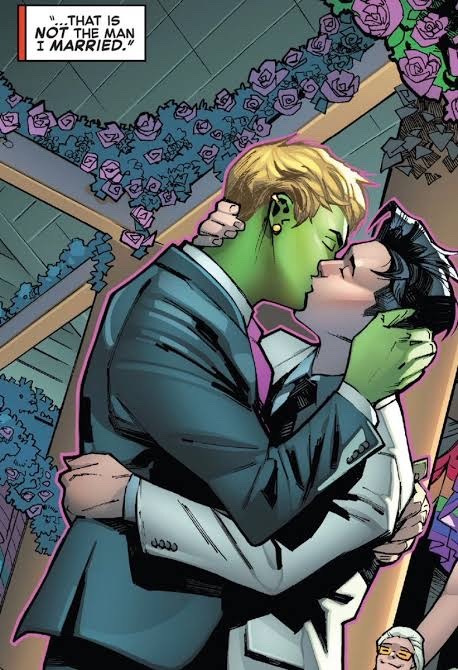#No Context Crow No. 322
Explore tagged Tumblr posts
Text

No Context Crow #322: Circle Of Crows
Photo taken by Vicki Nelson.
#crows#corvids#corvidae#birds#animals#photos#photograph#nature photography#bird pics#bird photography#animal photography#photography#circle#summoning circle#is that what they're doing?#who knows#has credit#daily crows#crow queue#No Context Crow No. 322
82 notes
·
View notes
Text

I posted 1.140 times in 2021
322 posts created (28%)
818 posts reblogged (72%)
For every post I created, I reblogged 2.5 posts.
I added 583 tags in 2021
#druck - 282 posts
#batwoman - 47 posts
#runaways - 39 posts
#six of crows - 33 posts
#shadow and bone - 33 posts
#brainia - 31 posts
#supergirl - 31 posts
#kieutou - 30 posts
#kanej - 30 posts
#olympics 2020 - 27 posts
Longest Tag: 96 characters
#like it is always so entertaining to read about this part of history even though i hate monarchy
My Top Posts in 2021
#5
I keep wondering if any poor soul at the docks witnessed Kaz meeting Inej’s parents and tried to tell people he had seen the bastard of the barrel desperately fixing his tie, gloveless, as he almost lost it over meeting The Wraith’s parents, like imagine trying to get someone to believe in THAT
616 notes • Posted 2021-07-21 22:01:45 GMT
#4
Six of Crows as John Mulaney Quotes - Part 2
You know the drill, attention to Six of Crows and Crooked Kingdom spoilers!
The crows invading the Ice Court:

Kaz when he came to Ketterdam:
See the full post
659 notes • Posted 2021-08-12 23:52:09 GMT
#3
Sometimes in the quiet of the night I remember the time in 2019 that a Brazilian mayor, named Marcelo crivella, from Rio De Janeiro, attempted to ban marvel’s “Children’s crusade” because of the kiss scene between billy and teddy, claiming it was sexual content and shouldn’t be available for kids. For context, this is the scene that made the dude freak out:

He insisted the book should be inside a black plastic bag with a warning for inadequate content to protect children. The book was being sold on the Book Biennal, one of the most important events for literature in Brazil. The organization of the Biennal refused to censor the copies of Children’s crusade. Because of the whole confusion, all the copies of this comic were sold out in 35 minutes as a protest to Crivella.
He then ordered that his employees went to the book fair, fiscalized the books being sold there and removed those that were considered “inadequate”. They found nothing that wasn’t according to the law. Then, Justice had to get involved and state the obvious: the government has no right to “arrest” books.
As a result of the controversy, many libraries and book publishers came forward to oppose the mayor’s posture and one of the country’s most famous newspapers put Billy and Teddy on the cover of their edition to discuss the issue:
See the full post
804 notes • Posted 2021-04-24 01:09:41 GMT
#2
Me at every Sara and Felice scene:

Sorry I don’t make the rules
834 notes • Posted 2021-07-03 02:32:12 GMT
#1
I think we as a society don’t talk enough about how Vision is incapable of producing a single straight child:


See the full post
3560 notes • Posted 2021-03-12 22:40:31 GMT
Get your Tumblr 2021 Year in Review →
0 notes
Text
*Aristotle: Ethos and Logos and Pathos*
In this entry, I will examine the critical questions: What is the main purpose of this artifact’s message and how are ethos, pathos, and logos used in this rhetorical artifact to achieve that purpose? Is the way that these rhetorical appeals are used ethical? To investigate these questions, I examined Barack Obama’s speech, “A More Perfect Union.” In this speech, Obama uses ethos, pathos, and logos to convince his audience that the issue of race cannot be ignored and can only be solved through unity, doing so in an ethical way because he calls all people to find a common ground for working together for change.
“A More Perfect Union” was delivered by Barack Obama on March 18, 2008, at the Constitution Center in Philadelphia. At this time, Barack Obama was a United States senator running for the 2008 Democratic Party presidential nomination. In this speech, Obama responds to the widespread disapproval of the controversial remarks made by his former pastor and campaign advisor, Reverend Jeramiah Wright, who was a pastor of Trinity United Church of Christ in Chicago. In various sermons Wright had attacked the United States in fiery and politically divisive terms. Obama attempts to contextualize Wright’s comments and attacks on the United States while applying it to the broader issue of race in the United States. Ultimately, he asks the American people to come together and address the issue of race in order to create a better society for future generations.
In his explanation of Greek philosopher Aristotle (384–322 BCE) and his rhetorical strategy, James A. Herrick credits Aristotle for being a major contributor to the development of Western thought on rhetoric. Aristotle was first interested in the art of rhetoric in Athens, taking on Plato’s views towards rhetoric. However, he later shifted his study of the art to a more systematic approach. Aristotle believed rhetoric to be an art that combines a logical study, a psychological study, and a sociological study. Herick defines Aristotle’s three artistic proofs that make up the technique of rhetoric and show why Aristotle believed rhetoric to be an art. The three artistic proofs that are taught by the art of rhetoric are as follows: “(1) logos or arguments and logical reasoning, (2) pathos or the names and causes of various emotions, and (3) ethos or human character and goodness” (2013, p. 78). Aristotle believed that logos, pathos, and ethos provide the speaker with the proofs necessary to persuade an audience. By taking a closer look at Obama’s speech we can see how he uses each of these three artistic proofs.
Obama builds his ethos as an honest man by acknowledging the strengths and weaknesses of his own religion and relationship to his pastor in context to the broader issue of race in American society. As defined by Herrick, ethos is “the speaker’s character or personal credibility” (2013, p. 80). More specifically, Aristotle divides it into three main categories: “phronesis (intelligence, good sense), arete (virtue), and eunoia (goodwill)” (2013, p. 80-81). In other words, to have ethos, the speaker must portray trustworthy characteristics in order for their audience to believe them. Obama builds his credibility not only by his position as a senator, but more strongly by his virtue of being honest. As mentioned earlier, Obama addresses excerpts from Reverend Wright’s sermons that had been intensely scrutinized by the media and criticized for attacking the government for dishonesty and blaming the country for spreading terrorism. He denounces Reverend Wright’s comments stating that they “were not only wrong but divisive, divisive at a time when we need unity; racially charged at a time when we need to come together to solve a set of monumental problems...problems that confront us all.” However, Obama does not disown Reverend Wright as a person because those comments are not what solely define him as a person. Obama remarks that Reverend Wright is someone who introduced him to his Chirstian faith, who spoke of the importance to love one another and to care for those less fortunate. He then goes on to describe his first experience at Trinity where he learned about stories of survival, freedom, and hope that members of his black church experienced. He acknowledges that there too is “bitterness and biases that make up the black experience in America.” He goes on to say that he cannot disown Reverend Wright any more than he can disown the black community or his white grandmother, because people like him and people like his white grandmother, who has her own biases, are part of him and part of America. Obama’s explanation and contextualization of his pastor’s comments and his own faith reflect honesty because he is not trying to cover anything up or ignore the flaws that the black community or any community might have. Instead, he recognizes the imperfections and in a broader sense, uses this to help his audience recognize the imperfections that exist in society. He uses ethos to persuade his audience to acknowledge these issues and come together in order to solve them.
In addition to using ethos, Obama uses a pathos appeal by drawing on personal experiences to create the feeling of hope in addressing the issue of race. Herrick defines pathos as “emotional appeals that give persuasive messages their power to move an audience to action” (2013, p. 79). In concluding his speech, Obama leaves the audience to reflect on the story of a young, 23-year-old white woman named Ashley Baia. He explains that she helped organize his campaign in Florence, S.C. and had been working for a predominately African-American community since the start of the campaign. One day she participated in a discussion where everyone was telling their personal stories and why they were helping the campaign. Ashley’s purpose began when her mother got cancer and she ended up losing her healthcare and going bankrupt. Ashley had to support her mother during this time and she explained that her reason for joining the campaign was to help other millions of children who need to do the same for their parents. Obama uses this story to explain that Ashley might have made an alternate choice and blamed her mother’s problems on blacks, Hispanics, or some other convenient scapegoat. Instead, Ashley found allies to help her fight injustice. He then continues the story by saying that an elderly black man who had been sitting and listening to Ashley’s story was asked why he was there, and he answered, “I am here because of Ashley.” Obama uses the emotional appeal of this story to show how a white girl and an old black man found an understanding between each other and how he hopes other people of diverse backgrounds can do the same. The story generates hope that diverse people can work together on racial as well as other issues.
Lastly, Obama uses logos to appeal to his audience by showing past instances when unity has prevailed in the United States. According to Herrick, Aristotle used logos in rhetoric “to refer to proofs available in words, arguments, or logic of a speech” (2013, p. 79). Logos is the implementation of logical proof. It refers to reasoning or formal logic. Obama begins his speech by referring to the Constitution that promised its people a more perfect union over time. However, he points out the fact that the very words of this promise were not enough to free slaves and give every person of color their complete rights and responsibilities as citizens of the United States. Instead, “what would be needed were Americans in successive generations who were willing to do their part – through protests and struggles, on the streets and in the courts, through a civil war and civil disobedience, and always at great risk – to narrow the gap between the promise of our ideals and the reality of their time.” He refers to the people before us who, through their actions, helped pave the way for a more free, equal, and just society. Without the participation of the people, the promise of a more perfect union could not be made. Obama draws on this reasoning to instill in his audience that it is up to the American people to continue this march for a better society by solving these problems together as a people. He continues to refer to the past throughout his speech and reminds his audience “that so many of the disparities that exist between the African-American community and the larger American community today can be traced directly to inequalities passed on from an earlier generation that suffered under the brutal legacy of slavery and Jim Crow.” He then gives various examples of the inequalities that are still evident today: the impact of segrated schools on the acheivement gap between black and white students, legalized discrimination which prevented black families from accumulating wealth for future generations, and the lack of ecnomic opportunity among black men that contributed to the violence and neglect we see today. In referring to this history of the United States, Obama draws on logic to show how racial inequalities began and why they continue to exist today. He does this in the attempt to persuade his audience of the importance of unity in order to promote change for a better society.
Obama’s use of these rhetorical appeals to persuade his audience is ethical because his ultimate desire is to unify the people of the United States. Furthermore, there are no parts in his speech that attempt to mislead or to manipulate information. For example, his reference to United States history and to the Constitution are truthful and factual. In addition, Obama’s willingness to address issues about race that are rarely ever spoken about appeals to his honest and truthful intentions and his desire to direct the country to a better place. When addressing the comments about his former Reverend, Obama does not try to justify the statements in any way, but instead uses them to acknowledge the flaws and inequalities in our society and emphasize the importance and need for change. This speaks to Obama’s good ethics because he tries to remain as neutral as possible and attempts to address all sides on the issue of race, while emphasizing his concern for the people of the United States.
In conclusion, Obama’s speech on race gives strong reasoning for why the issue of race should not be ignored and can only be solved by people of diverse backgrounds and beliefs coming together. He applies all three of Aristotle’s artistic proofs to move his audience in the direction of believing that society can change if the union is strengthened. He does so ethically by giving truthful and factual logic, while avoiding any manipulation of information.
References
Herrick, J.A. (2013). The history and theory of rhetoric: An introduction. London and New York: Routledge Taylor & Francis Group.
Obama, B. (2008, March 18). A more perfect union. Eidenmuller, M.E., American Rhetoric. Retrieved from https://www.americanrhetoric.com/speeches/barackobamaperfectunion.htm
0 notes